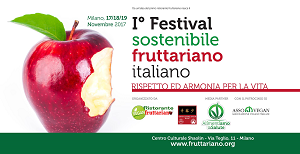L’ Architecture, with a history of more than 2.000 years ago, is a characteristic of Chinese culture. There are certain features common to Chinese architecture, regardless of the specific region or use. The dominant note is the’ width while the emphasis on Western architecture tends to emphasize the height. Another important feature is the symmetry, which connotes a sense of grandeur as it applies to all, from palaces to farmhouses. A notable exception is only in the design of gardens, made in more asymmetrically possible because, the basic principle of the composition of a garden, It is to create durable flows, that enable people to wander and enjoy the garden without rules, as in nature. Feng shui has played an important role in structural development. Other features include:
-
Domestic courts : if the Western contemporary architectural practice involves – in contrast to what has always done in the past – to surround the buildings with an open space, part of the property, the traditional Chinese architecture, is characterized by buildings or complex of buildings that occupy the entire property, enclosing open spaces within them. These enclosed spaces are divided into two main types: the courtyard (Hospital) and “light well” (Ceiling).
-
Hierarchy: in traditional Chinese, the hierarchical structure, the importance and use of buildings, depend more heavily on the placement of buildings on lots or in the same complex. The buildings with doors on the front of the property are considered more important than looking out on the sides; buildings further away from the front of the property are the least important. However, buildings and most private in the rear of the property are held in highest esteem and reserved for older family members, from the buildings near the front, often used for the easement. In complexes with shorter, the central courtyard and the buildings facing it are considered more important than peripheral, typically used as warehouses or for kitchens.
-
Feng Shui: “Wind and water” is the Chinese art, built more than 3000 age, that teaches how to harmonize the space where you live; to dialogue with the environment; to draw energy and benefit from the space around us. The world and’ seen as a 'Uniqum’ whose main element is the Qi (vital energy). Feng Shui studies the models by which this energy flows with seasonal cycles, based on the locations, Guidelines , frequencies, combinations. The Ch'i gives different energies to the earth, fire, Metals, woods and waters, to different combinations of colors. The study of all manifestations of Qi energy can create environments to stay balanced and full of vital energy, or to correct imbalances recreating the harmony. The principles of this art are based at’ I'Ching or Book of Changes, foundation of almost all traditional Chinese philosophy.
The classification of Chinese architectural elements include:
-
樓 (楼) lou (multistory)
-
Taiwan tai (terraces)
-
亭 stuff (Chinese pavilions)
-
阁 (阁) give (two-story pavilions)
-
Tower ta (Chinese pagodas)
-
Well cassettoni algae
-
轩 (轩) xuan (verandas)
-
Pavilion xie (pavilions)
-
House wu (rooms)
-
Brackets dougong
CITY’ PROHIBITED | GREAT WALL
Namo Amitabha






